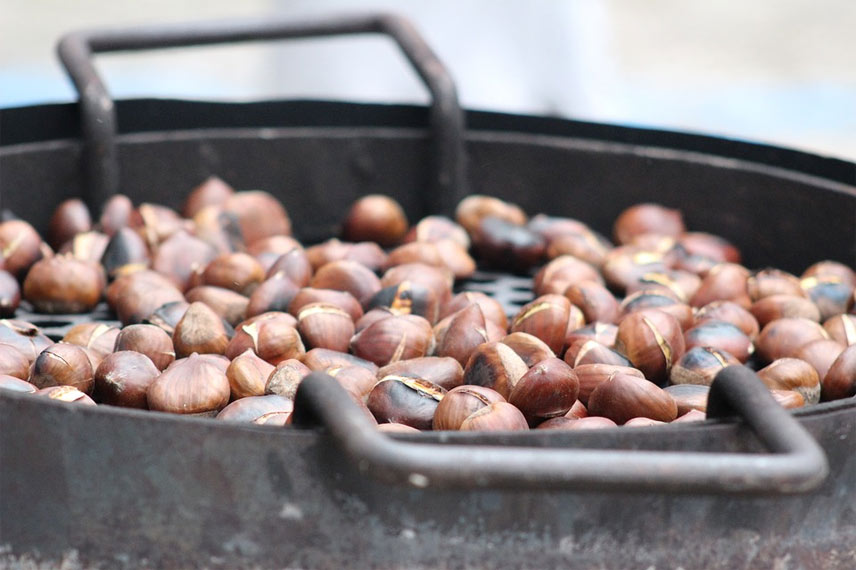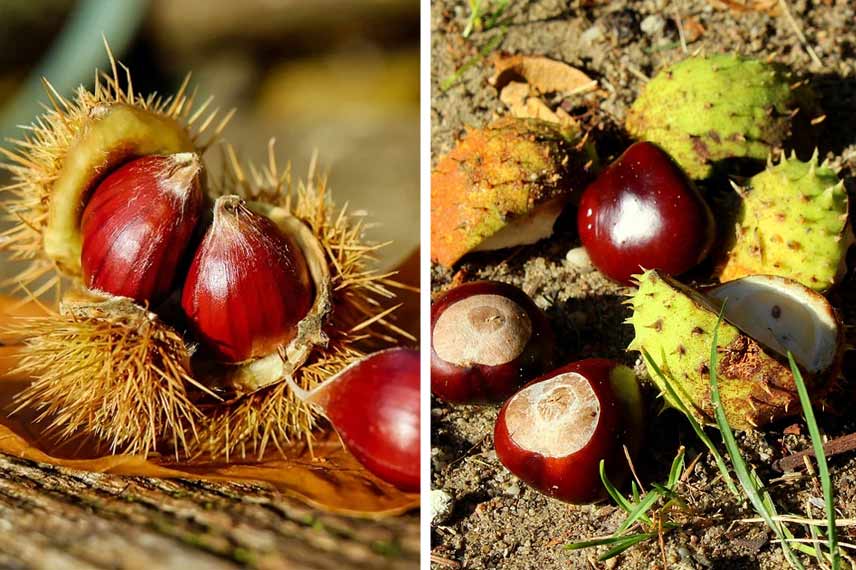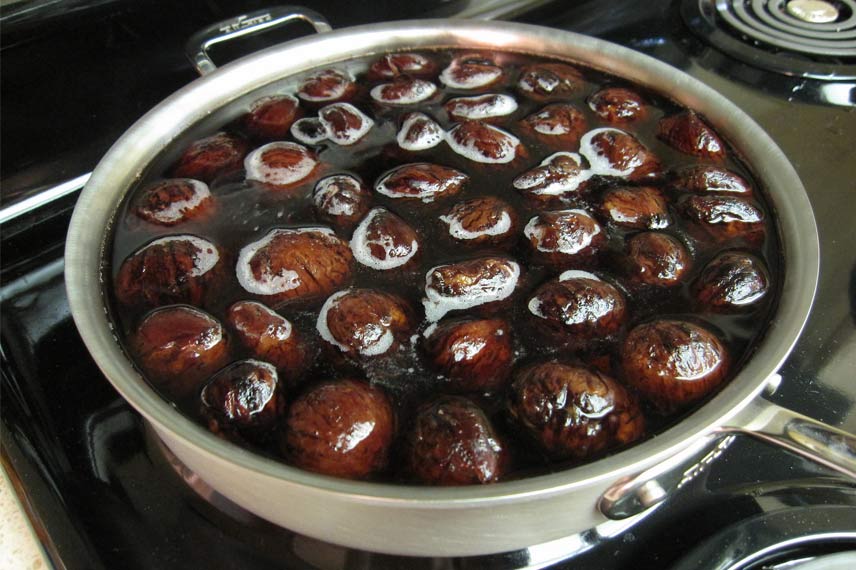The chestnut tree is endemic to certain regions of France, including the Cévennes and the Southern Alps. During times of war and famine, chestnuts long served as a staple food for the inhabitants of these regions.
Highly nutritious and subtly sweet, chestnuts can be used as a vegetable in savoury dishes, as well as in desserts, often in the form of chestnut cream or chestnut jam. They can even be ground into gluten-free flour. Traditionally, chestnuts are roasted over embers.

But to enjoy this versatile and nutritious fruit, you must first harvest and store chestnuts using the right methods. Here’s how to proceed.
Chestnut or Horse Chestnut? Beware of Confusion!
People often mistakenly refer to "horse chestnuts" when they actually mean sweet chestnuts. The latter is the fruit of Castanea sativa, the chestnut tree, while the horse chestnut is the fruit of Aesculus hippocastanum, the horse chestnut tree.
Be careful not to confuse them during harvest, as horse chestnuts are not edible!

Chestnuts VS Horse Chestnuts
To tell them apart:
- The horse chestnut has a thick, bumpy green husk with sparse, blunt spines. The husk contains a single, very round fruit, rarely two.
- The chestnut tree produces aments (catkins) 12 to 20 cm long. These husks, brown and covered in numerous spines, contain two or three fruits (the chestnuts) separated by membranes. The achenes are notably smaller than horse chestnuts and have a triangular, slightly flattened shape.
How to Tell When Chestnuts Are Ripe?
Chestnuts are typically harvested between September and early November, though this period may vary depending on the variety, region, and year.

Ripe fruits are easily recognisable as they are the ones that fall from the tree. The husks on the ground can then be collected to retrieve the achene (the fruit).
Note: Chestnuts should be harvested daily as soon as they fall to prevent them from spoiling on the ground.
How to Gather Chestnuts?
To avoid damaging them during harvest, chestnuts can be picked by hand or shaken from the tree. The latter method prevents the fruits from being damaged by hitting the ground but is not suitable for forest harvesting.

Hand-Picking
Equipment:
- 1 pair of gloves;
- 1 basket.
Start by wearing gloves to avoid pricking your fingers during picking. Collect the achenes, place them in your basket, and leave the husks behind.
Shaking the Chestnuts
Equipment:
- 1 net;
- 1 long stick;
- 1 pair of gloves;
- 1 basket.
Begin by placing a net under the chestnut tree. Then, shake the most accessible branches with a long stick to make the fruits fall. All that’s left is to extract the achenes from their husks and place them in your basket.
How to Store Freshly Picked Chestnuts?
Contrary to common belief, chestnuts are not dried fruit. As a result, this fresh fruit is very delicate and sensitive to heat and moisture. Without any preservation treatment, fresh chestnuts can be stored for up to a week in the fridge.
Preparing Chestnuts for Long-Term Storage
For long-term storage, you must prepare your chestnuts beforehand.
Soaking the Chestnuts
Equipment:
- 1 bowl;
- water.
To eliminate pathogenics agents, place the chestnuts in a bowl of water at 40 °C, then stir them. Discard any achenes that float to the surface immediately.
Soak the healthy chestnuts at room temperature for a week, changing the water daily. This technique kills parasites and any larvae in the fruits. Chestnuts that float are likely empty, rotten, or wormy and should be discarded.
Removing the Chestnut Skin
Equipment:
- 1 saucepan;
- 1 knife;
- water.
Cooking chestnuts makes it easier to remove their skin. A thermal shock is also recommended to simplify the process.
Score the skin of the achenes and place them in the freezer. Then, boil the chestnuts for 5 minutes.

© Satoshi Nakagawa - Flickr
Remove the saucepan from the heat and take out the chestnuts to peel them. Remove the bark and the second skin of the achene.
How to Store Chestnuts for Several Months?
There are several methods to store your chestnuts for several months.
Drying Chestnuts
Equipment:
- drying racks.
Spread the unpeeled achenes on drying racks, avoiding overlap. Place them in a well-ventilated room.
After 7 to 10 days, the chestnuts will be dry and can be stored in a cool, airy space. Stir them occasionally for optimal storage for up to 4 months.
Preserving Chestnuts in Jars
Equipment:
- jars;
- 1 large pot or pressure cooker.
Sterilise your jars and fill them with peeled chestnuts. Cover with boiling salted water and seal the jars tightly. Place them in a pot or pressure cooker filled with water and sterilise the jars again. Once done and the jars have cooled, store them in a dark, cool place for up to 12 months.
Freezing Chestnuts
Equipment:
- 1 freezer;
- freezer bags.
Freezing is another highly effective method for long-term chestnut storage.
If you don’t want to peel the achenes, simply score the skin in a cross on the rounded side. Then, place the chestnuts in the freezer. This method is ideal if you plan to roast your chestnuts.
You can also freeze peeled fruits in a freezer bag. This method allows storage for up to 1 year, or even longer.
































Comments